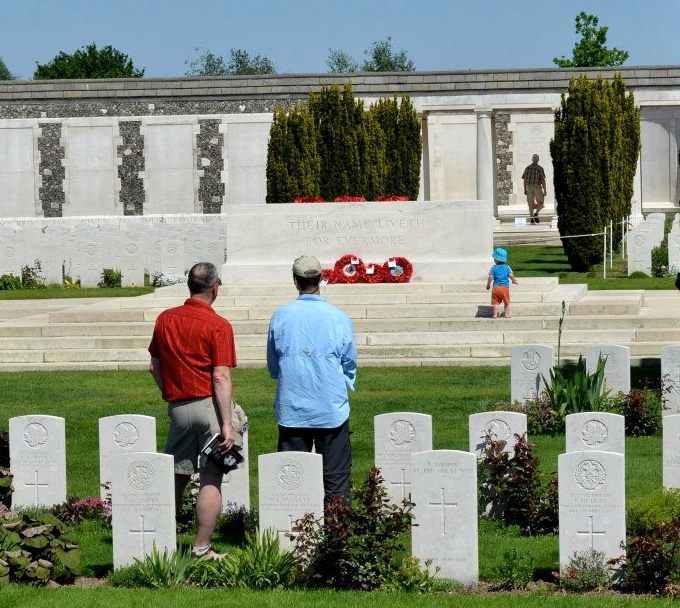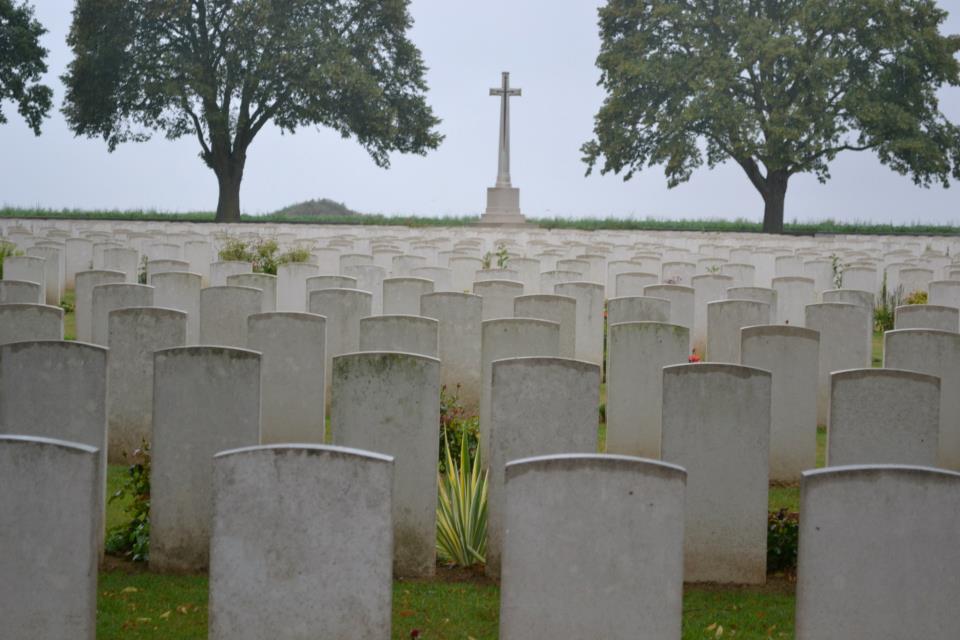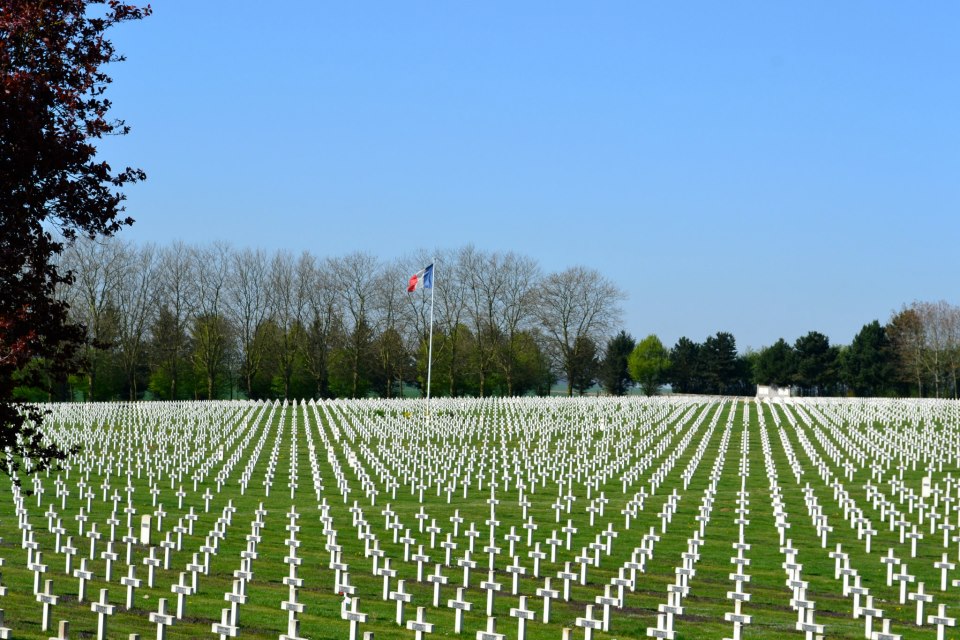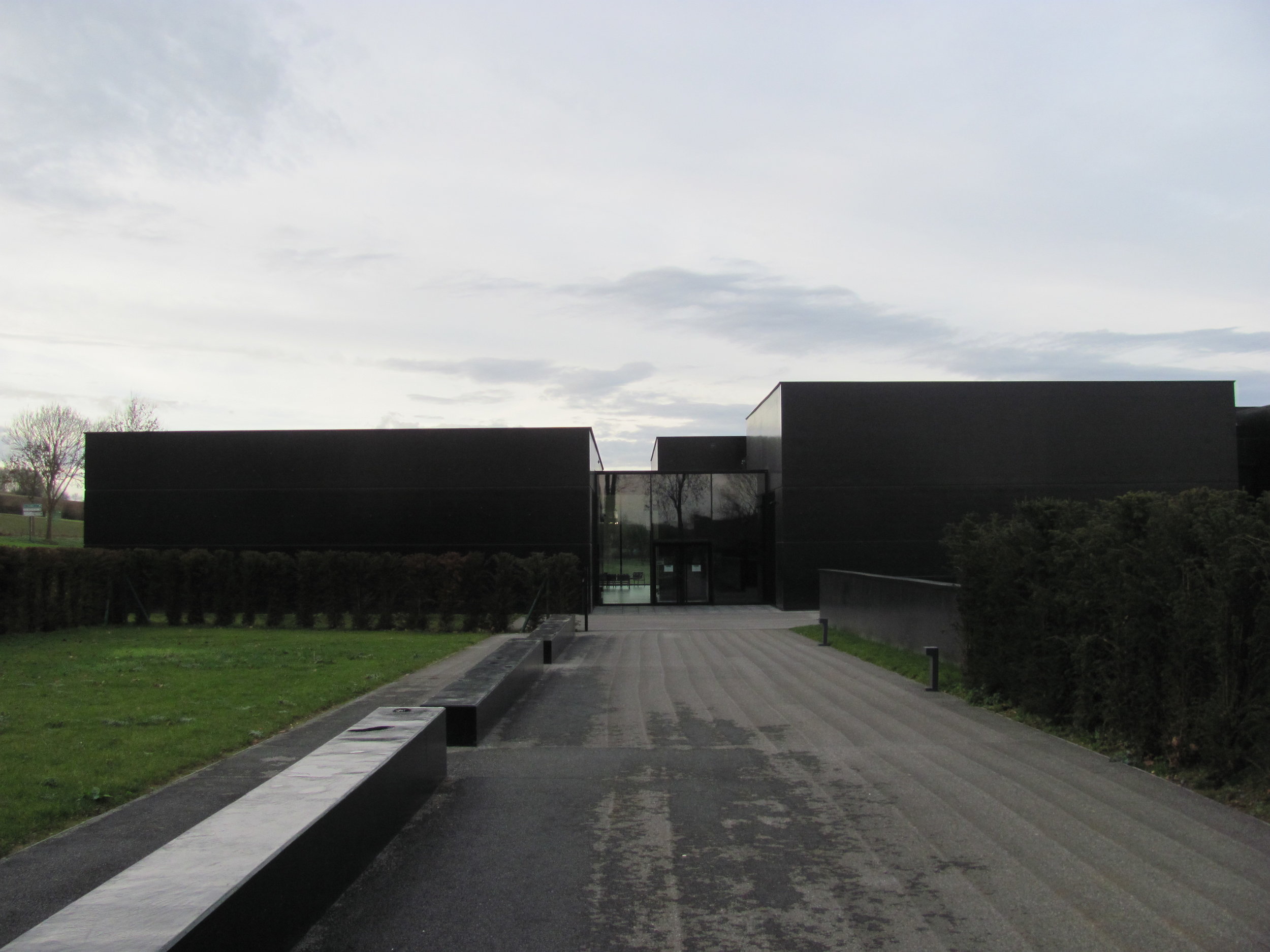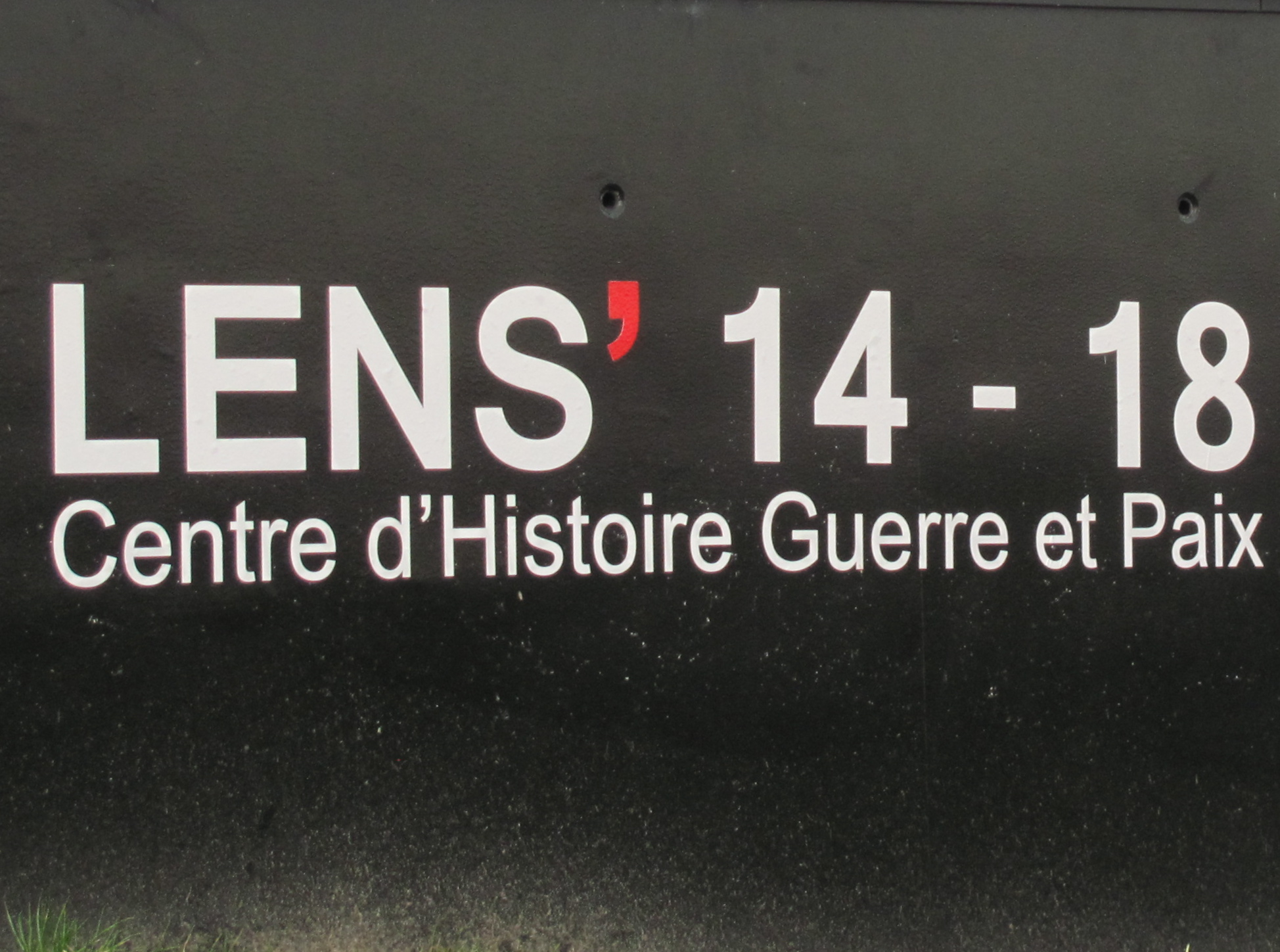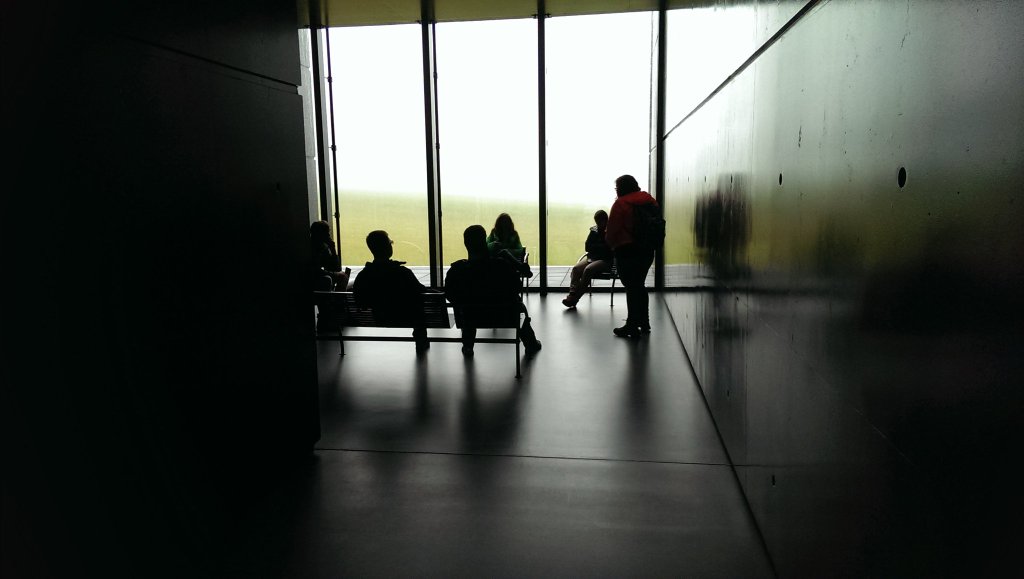Every Commonwealth war graves cemetery of a certain size has a stone of remembrance with Rudyard Kipling's words - Their Name Liveth For Evermore. Every graveyard has its sombre beauty whether there are 24 graves, in Jeruselum Commonweath Cemetery, Normandy or the overwhelming 11,000 in Tyne Cot Commonwealth Cemetery in Belgium. The gravestones face towards the front line of their respective conflict. When we stand in remembrance at these locations it can be emotional and knowing the narrative of the battle, the dates, the military units' names, or the individual soldier's story can help frame the experience. When we visit their final resting place, it is a way to make sure that they are always remembered.
Extraordinary Collection: Lens 14-18
This new and imposing, cubic building in Lens houses a collection of artifacts, print and digital photo displays from WW1, many are images and items I have never seen before. Curated items from several government archives are displayed and integrated here in a highly engaging way. Hushed tones fill this sombre space. It took days to absorb the experience of seeing this extraordinary collection and it still ruminates with me.
Personal Postcards From France 1918
On the wall of the second floor in the Ottawa Officers' Mess are five samples of hand embroidered postcards that were sent home from France, by Corporal Bill Proctor, Machine Gun Section, 38th Ottawa Battalion, CEF to his English girlfriend, later his wife, Florence, during WW1. One of the postcards has the most delicately embroidered national flags in each of the numerals. It is when I see these small, intimate items that the realities of the WW1 conflict resonate. Once you stand at the Vimy Memorial, everything you see about WW1 after that, is suddenly more meaningful. Part of this battle in Canadian history are the myriad of details from people living their individual lives amidst the confusion and chaos of conflict overseas in France. These small, delicate communications have survived the war and remain for us to imagine the seperation of loved ones sending remembrances in the post. CJ

